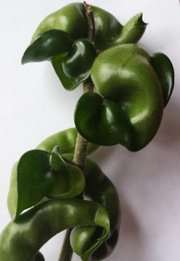Q I feel sure that you have discussed this, but it would be helpful to everyone if you would go over the treatment for crape myrtles that are infected with the disease that is going around our area of the state. This is the one that is most obvious by the large amount of black sooty deposits under the tree or shrub itself and on its leaves. I am a volunteer who works with the Lakewood Improvement District in North Little Rock. We have eight or 10 large crape myrtles that are infected. Obviously, we would like to treat these plants. We hope that you can advise us.
A The relatively new problem you are referring to is not a disease but an insect, crape myrtle felt scale. The small white felt-covered insects attach themselves to the tree and suck sap. As they feed, they give off a sweet substance called honeydew. Where the honeydew falls on the trunks, branches and leaves, black sooty mold develops.
Before the trees leaf out, you can use a small, soft brush to wash the trunks with a soapy solution -- clean off the sooty mold. A dormant oil can be applied in late fall through midwinter, but it is getting a bit late for that to have much effect. In a few weeks, apply a systemic insecticide containing Imidacloprid around the trunk of the plant. Mix according to the label instructions. The plant will absorb the insecticide as it begins moving nutrition up through the branches. This will kill the insects. Once dead, they won't disappear, but you should see no new signs, and there should be no more black sooty mold.
We are entering our third growing season with these insects and get more reports of them all the time. So far we seem to have them from Little Rock to points south. While the scale insect will not kill a tree instantly, it can limit bloom and the overall health. Don't treat every crape myrtle in your yard, just those that are infested by the scale insects. Research is ongoing across the South to determine whether any varieties are resistant, and to find other methods of control. The University of Arkansas Cooperative Extension Service fact sheet can be downloaded for free by searching uaex.edu for "fsa-7086." A story I wrote about felt scale last year is at bit.ly/24Ouk1Q.
Q I have always fertilized my azaleas after they bloom in the spring with systemic azalea fertilizer. I have never seen signs of lace bugs, so I am wondering if I could just use plain azalea fertilizer -- not systemic? Also, is the one feeding enough?
A I think one application of azalea fertilizer is all that established plants need each year. The time to apply it is immediately after bloom. If you do not have insect problems, there is no need to use a combo fertilizer and systemic insecticide. A stand-alone fertilizer should be fine. I would use an azalea fertilizer such as ammonium sulfate or aluminum sulfate to help keep the soil acidic.
Q My daughter is trying to root the plant [in a photo]. We don't know what it is. It appeared to be a vine with offshoots from the root. It was potted. Can you give us any direction on what it is and the best way to root it?
A The plant in question is a contorted hoya, commonly called Hindu rope plant or contorted wax plant. These succulents are quite slow-growing, but when they bloom they have beautiful clusters of fragrant flowers.
Hoya plants produce the roots and new shoots at a node -- where the leaves are attached. You can either lay the cutting you have on top of moist potting soil and, where the leaves attach, push it lightly into the soil, or you can make cuttings with one set of leaves, leaving a longer stem section below the leaves to anchor the cutting into the soil. Cuttings should be positioned so the node (the point where the leaves are attached to the stem) is at the soil surface to ensure maximum rooting. Avoid sticking cuttings too deeply, as they will not root well if the nodes are below the surface. Cuttings should root in three to four weeks, and a single shoot usually develops from one of the buds on each cutting four to six weeks later.
Janet B. Carson is a horticulture specialist for the University of Arkansas Cooperative Extension Service. Write to her at 2301 S. University Ave., Little Rock, Ark. 72204 or email her at
jcarson@arkansasonline.com
HomeStyle on 03/12/2016

